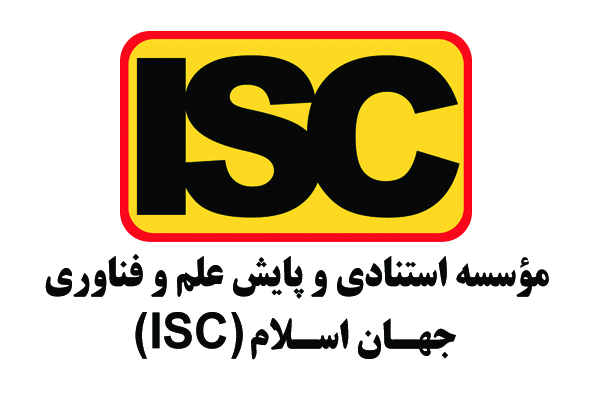ارزیابی استراتژیک از نقش شبکههای 5G در تسهیل فرآیندهای کارآفرینی موبایلی
کلمات کلیدی:
شبکههای 5G, کارآفرینی موبایلی, نوآوری, چالشهای فنی, تاثیر اجتماعیچکیده
هدف از این مطالعه، ارزیابی استراتژیک نقش شبکههای 5G در بهبود کارآفرینی موبایلی است، با تمرکز بر تاثیرات بالقوه، چالشها، و فرصتهایی که فناوری 5G برای کارآفرینان موبایلی و کسبوکارهای آنها به همراه میآورد. یک طرح تحقیق کیفی اتخاذ شده، با استفاده از مصاحبههای نیمهساختاریافته به عنوان تنها روش جمعآوری دادهها. شرکتکنندگان شامل گروهی متنوع از کارآفرینان موبایلی، متخصصان فناوری اطلاعات و سیاستگذاران بودند، که دیدگاه گستردهای را نسبت به ادغام فناوری 5G در کارآفرینی موبایلی ارائه میدهند. چهار مضمون اصلی شناسایی شدند: تاثیر شبکههای 5G بر کارآفرینی موبایلی، تاثیر 5G بر نوآوری و توسعه محصول، چالشها و موانع فنی و زیرساختی، و اثرات اجتماعی و فرهنگی شبکههای 5G. هر مضمون شامل چندین مضمون فرعی و مفاهیم مرتبط بود، که نقش چندوجهی فناوری 5G در کارآفرینی موبایلی را نشان میدهد. شبکههای 5G پتانسیل قابل توجهی برای انقلابی کردن کارآفرینی موبایلی دارند، با ارائه فرصتهای جدید برای نوآوری، بهبود کارآیی عملیاتی، و امکان غلبه بر موانع سنتی. با این حال، استفاده موفقیتآمیز از فناوری 5G همچنین نیازمند رسیدگی به چالشهای فنی و مسائل تنظیمی است.
دانلودها
مراجع
Ali, G., & Nencioni, G. (2021). The Role of 5G Technologies in a Smart City: The Case for Intelligent Transportation System.
Sustainability. https://doi.org/10.3390/su13095188
Almutairi, M. (2022). Deep Learning-Based Solutions for 5G Network and 5g-Enabled Internet of Vehicles: Advances, MetaData Analysis, and Future Direction. Mathematical Problems in Engineering. https://doi.org/10.1155/2022/6855435
Attar, H., Issa, H., Ababneh, J., Abbasi, M., Solyman, A. A. A., Khosravi, M. R., & Agieb, R. S. (2022). 5G System Overview
for Ongoing Smart Applications: Structure, Requirements, and Specifications. Computational Intelligence and
Neuroscience. https://doi.org/10.1155/2022/2476841
Campbell, B., Kryscynski, D., & Olson, D. (2017). Bridging Strategic Human Capital and Employee Entrepreneurship
Research: A Labor Market Frictions Approach. Strategic Entrepreneurship Journal. https://doi.org/10.1002/sej.1264
George, B. (2011). Entrepreneurial Orientation: A Theoretical and Empirical Examination of the Consequences of Differing
Construct Representations. Journal of Management Studies. https://doi.org/10.1111/j.1467-6486.2010.01004.x
Hu, J., & Wu, J. (2022). 5G Network Slicing: Methods to Support Blockchain and Reinforcement Learning. Computational
Intelligence and Neuroscience. https://doi.org/10.1155/2022/1164273
Juan, E., Lauridsen, M., Wigard, J., & Mogensen, P. (2022). Handover Solutions for 5G Low-Earth Orbit Satellite Networks.
IEEE Access. https://doi.org/10.1109/access.2022.3203189
Lorincz, J., & Klarin, Z. (2021). How Trend of Increasing Data Volume Affects the Energy Efficiency of 5G Networks. Sensors.
https://doi.org/10.3390/s22010255
Matinmikko, M., Latva-aho, M., Ahokangas, P., & Seppänen, V. (2018). On Regulations for 5G: Micro Licensing for Locally
Operated Networks. Telecommunications Policy. https://doi.org/10.1016/j.telpol.2017.09.004
Nowak, T., Sepczuk, M., Kotulski, Z., Niewolski, W., Artych, R., Bocianiak, K., Ośko, T., & Wary, J.-P. (2021). Verticals in
G MEC-Use Cases and Security Challenges. IEEE Access. https://doi.org/10.1109/access.2021.3088374
Olokundun, M., Ogbari, M. E., Falola, H. O., & Ibidunni, A. S. (2022). Leveraging 5G Network for Digital Innovation in Small
and Medium Enterprises: A Conceptual Review. Journal of Innovation and Entrepreneurship.
https://doi.org/10.1186/s13731-021-00181-5
Pawlak, R., Krawiec, P., & Żurek, J. (2019). On Measuring Electromagnetic Fields in 5G Technology. IEEE Access.
https://doi.org/10.1109/access.2019.2902481
Shayea, I., Ergen, M., Azmi, M. H., Aldirmaz-Colak, S., Nordin, R., & Daradkeh, Y. I. (2020). Key Challenges, Drivers and
Solutions for Mobility Management in 5G Networks: A Survey. IEEE Access.
https://doi.org/10.1109/access.2020.3023802
Zhang, Z., & Wang, Q. (2021). Application Status and Prospects of 5G Technology in Distribution Automation Systems.
Wireless Communications and Mobile Computing. https://doi.org/10.1155/2021/5553159












